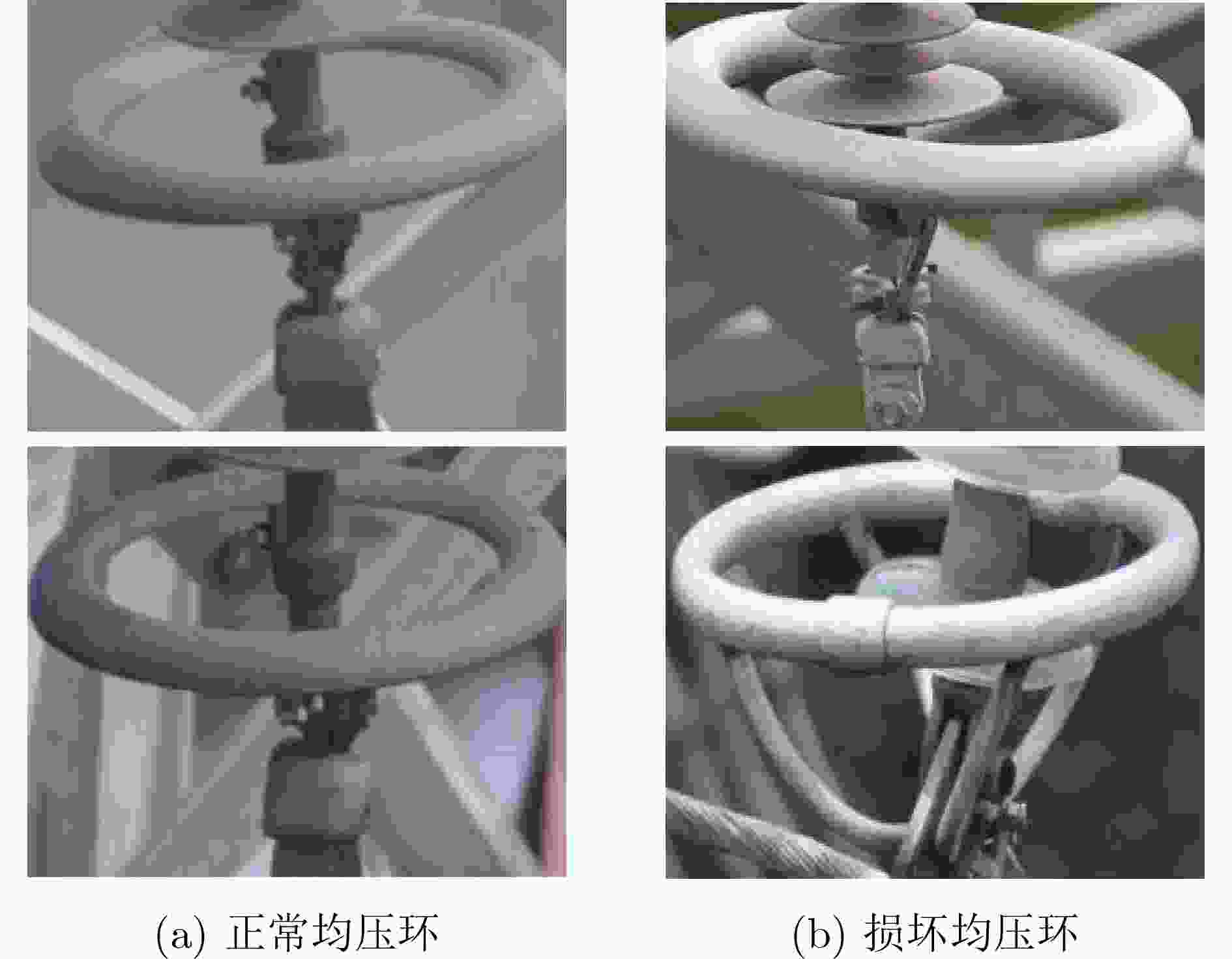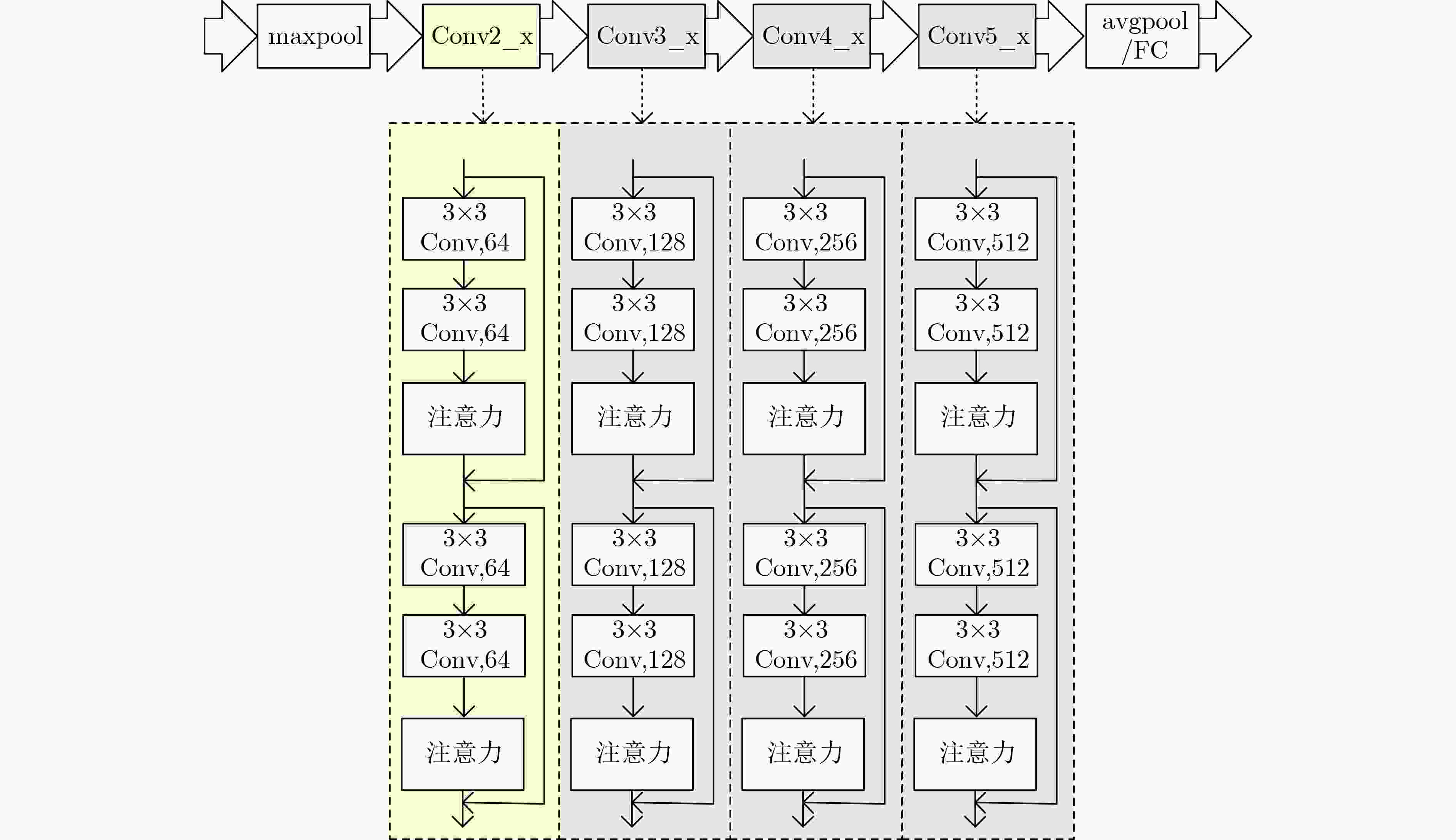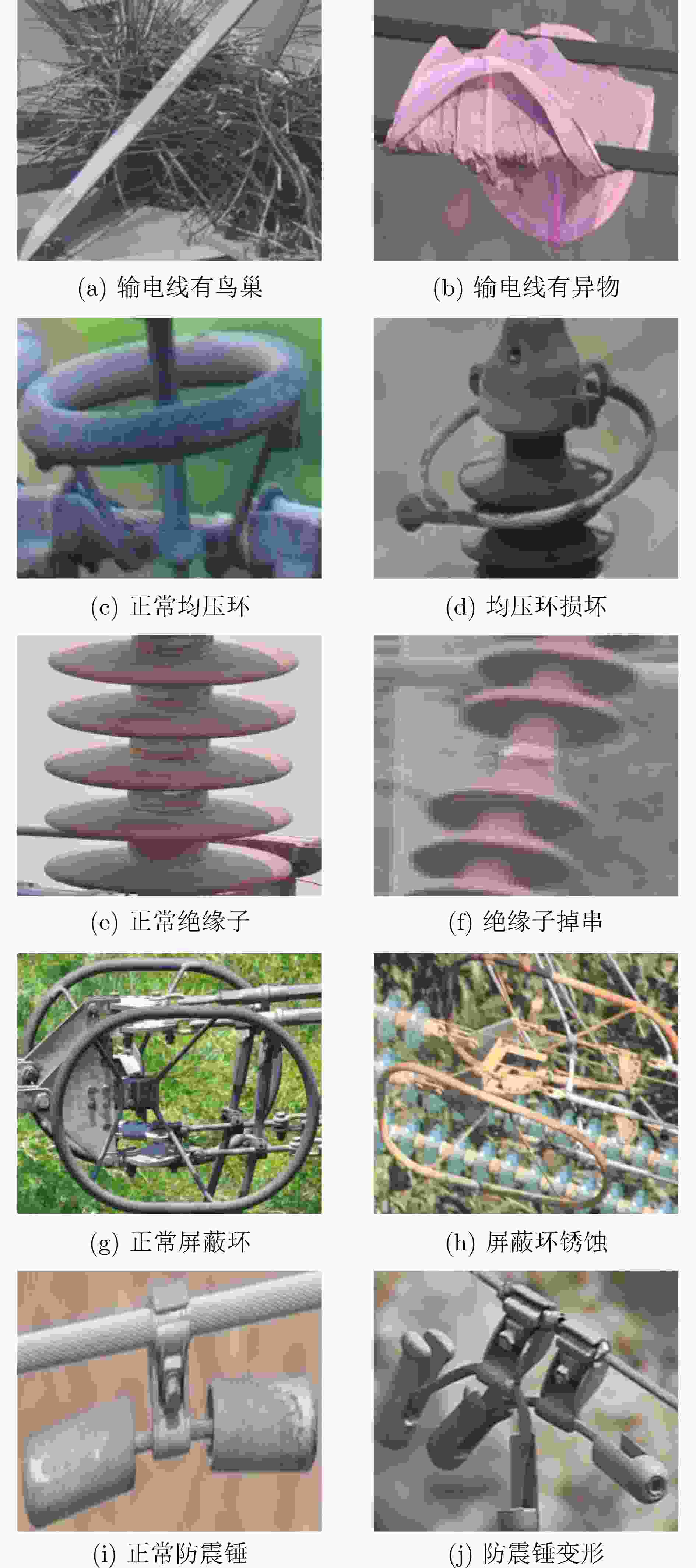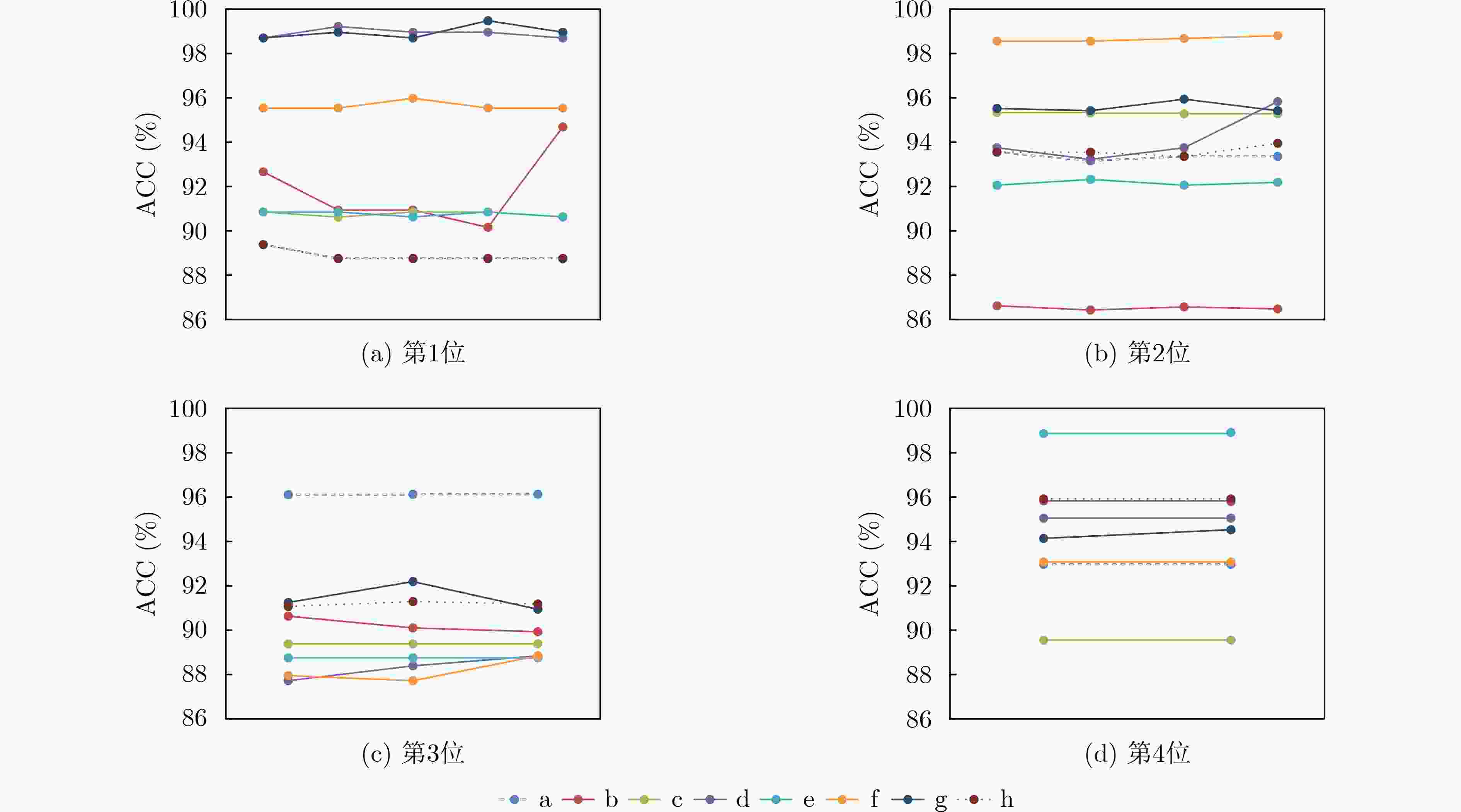Fault Classification of Transmission Line Components Based on the Adversarial Continual Learning Model
-
摘要: 输电线路金具巡检是电网安全态势感知中不可或缺的一部分,线路的定期巡检关系着电力系统是否能安稳运行。针对目前的输电线路部件缺陷分类模型无法处理现实情况中无限数据流的问题,该文提出一种基于对抗性持续学习的输电线路部件及其缺陷分类方法。将持续学习技术引入到输电线路部件缺陷分类任务中,使得分类模型在保证分类准确率的同时,可以从无限增长的数据流中不断学习新的分类任务,并且减少时间资源消耗。通过融入注意力机制,增强了模型对细微特征提取能力,解决了分类任务类间差异过小的问题,提高分类准确率。针对持续学习任务中的排序不可知性问题,提出基于离散度进行排序的方法,以实现持续学习分类模型的最优利用。最后,在CIFAR-100公共数据集和自建数据集上进行实验验证,并对模型的各种性能进行分析与比较。结果表明该文提出的方法实现了部件及其缺陷分类任务的可持续学习,缓解了灾难性遗忘的问题;融入注意力机制和使用L3损失函数使分类准确率分别提高了1.43%和2.25%;实现了持续学习分类模型在已获取数据集上的最优利用,为电网安全态势感知打下了坚实的基础。Abstract: The inspection of transmission line fittings is an indispensable part of power grid security situation awareness. Focusing on the fact that the current transmission line component defect classification model cannot handle the problem of unlimited data flow in real situations, a transmission line component and its defect classification method based on adversarial continuous learning is proposed. In this paper, continuous learning technology is introduced into the task of transmission line component defect classification, so that the classification model can continuously learn new classification tasks from the infinite growth of data stream while ensuring the classification accuracy, and reduce the consumption of time and resources. By integrating attention mechanism, the ability of the model to extract subtle features is enhanced, the problem of small difference between classification tasks is solved, and the classification accuracy is improved. Focusing on the problem of sorting unknowability in continual learning tasks, a method of sorting based on discrete degree is proposed to achieve the optimal utilization of continual learning classification model. Finally, experiments are carried out on CIFAR-100 public data set and self built data set, and various performances of the model are analyzed and compared. The results show that the proposed method realizes the sustainable learning of component and defect classification task, and alleviates the problem of catastrophic forgetting. The accuracy of classification is improved by 1.43% and 2.25% respectively by integrating attention mechanism and using L3 loss function. The optimal utilization of continuous learning classification model is realized, which lays a solid foundation for power grid security situational awareness.
-
表 1 数据种类及数量(张)
种类 数量 种类 数量 鸟巢 532 异物 102 正常均压环 142 损坏均压环 159 正常绝缘子 1417 掉串绝缘子 541 正常屏蔽环 391 锈蚀屏蔽环 66 正常防震锤 1734 变形防震锤 80 表 2 不同主干网络对照实验
主干网络 ACC(%) 时间(min) 参数量(MB) BWT(%) AlexNet 90.86 553.8 14.3 –0.36 ResNet-18 92.58 711.3 16.4 –0.43 ResNet-34 91.76 1358.0 28.6 –0.52 ResNet-50 90.56 2168.4 32.1 –0.61 表 3 模型各部分消融实验
S/D P ACC(%) BWT(%) √ 54.07 –17.65 √ 47.70 0 √ √ 91.75 –0.92 表 4 改进网络前后模型性能对比(自建数据集)
主干网络 ACC(%) 时间(min) 参数量(MB) BWT(%) ResNet-18 92.58 711.3 16.4 –0.43 ResNet-18-att 94.01 929.4 17.6 –0.20 表 5 改进网络前后模型性能对比(CIFAR-100)
主干网络 ACC(%) 时间(min) 参数量(MB) BWT(%) ResNet-18 71.51 1466.3 31.3 –0.78 ResNet-18-att 72.69 1854.4 35.8 –0.51 表 6 L3损失函数消融实验
主干网络 L3 ACC(%) 时间(min) BWT(%) ResNet-18 91.75 514.3 –0.92 √ 92.58 711.3 –0.43 ResNet-18-att 91.76 799.2 –0.16 √ 94.01 929.4 –0.20 AlexNet 90.62 471.6 –0.42 √ 90.86 553.8 –0.36 表 7 8组对照实验准确率结果
实验编号 各任务准确率(%) 鸟巢异物
分类(1)均压环
分类(2)绝缘子
分类(3)屏蔽环
分类(4)防震锤
分类(5)a 88.75 93.36 96.13 92.97 98.85 b 86.48 89.93 95.81 94.69 98.85 c 89.38 90.63 95.28 89.55 98.87 d 88.84 97.81 95.05 95.83 98.70 e 88.75 90.63 95.72 92.19 98.92 f 88.84 90.31 95.54 93.08 98.80 g 86.59 94.53 95.42 90.94 98.96 h 88.75 93.95 95.92 91.18 98.85 平均 88.30 92.64 95.61 92.55 98.85 表 8 8组实验结果
编号 ACC(%) 时间(min) BWT(%) a 94.01 929.4 –0.20 b 93.15 828.1 0.29 c 92.74 1001.0 –0.07 d 95.25 923.9 0.80 e 93.24 890.2 –0.01 f 93.31 764.7 0.28 g 93.29 831.3 0.06 h 93.73 837.1 –0.03 -
[1] 于群, 李浩, 屈玉清. 基于深度学习的电网安全态势感知[J]. 科学技术与工程, 2019, 19(35): 273–278. doi: 10.3969/j.issn.1671-1815.2019.35.041YU Qun, LI Hao, and QU Yuqing. Security situational awareness of power grid based on deep learning[J]. Science Technology and Engineering, 2019, 19(35): 273–278. doi: 10.3969/j.issn.1671-1815.2019.35.041 [2] 刘权莹, 李俊娥, 倪明, 等. 电网信息物理系统态势感知: 现状与研究构想[J]. 电力系统自动化, 2019, 43(19): 9–21,51. doi: 10.7500/AEPS20181027002LIU Quanying, LI Jun’e, NI Ming, et al. Situation awareness of grid cyber-physical system: Current status and research ideas[J]. Automation of Electric Power Systems, 2019, 43(19): 9–21,51. doi: 10.7500/AEPS20181027002 [3] 张姝, 王昊天, 董骁翀, 等. 基于深度学习的输电线路螺栓检测技术[J]. 电网技术, 2021, 45(7): 2821–2828. doi: 10.13335/j.1000-3673.pst.2020.1336ZHANG Shu, WANG Haotian, DONG Xiaochong, et al. Bolt detection technology of transmission lines based on deep learning[J]. Power System Technology, 2021, 45(7): 2821–2828. doi: 10.13335/j.1000-3673.pst.2020.1336 [4] 刘思言, 王博, 高昆仑, 等. 基于R-FCN的航拍巡检图像目标检测方法[J]. 电力系统自动化, 2019, 43(13): 162–167. doi: 10.7500/AEPS20180921005LIU Siyan, WANG Bo, GAO Kunlun, et al. Object detection method for aerial inspection image based on region-based fully convolutional network[J]. Automation of Electric Power Systems, 2019, 43(13): 162–167. doi: 10.7500/AEPS20180921005 [5] 赵振兵, 李延旭, 甄珍, 等. 结合KL散度和形状约束的Faster R-CNN典型金具检测方法[J]. 高电压技术, 2020, 46(9): 3018–3026. doi: 10.13336/j.1003-6520.hve.20200507023ZHAO Zhenbing, LI Yanxu, ZHEN Zhen, et al. Typical fittings detection method with faster R-CNN combining KL divergence and shape constraints[J]. High Voltage Engineering, 2020, 46(9): 3018–3026. doi: 10.13336/j.1003-6520.hve.20200507023 [6] 赵振兵, 张薇, 戚银城, 等. 融合深度特征的输电线路金具缺陷因果分类方法[J]. 北京航空航天大学学报, 2021, 47(3): 461–468. doi: 10.13700/j.bh.1001-5965.2020.0456ZHAO Zhenbing, ZHANG Wei, QI Yincheng, et al. Causal classification method of transmission lines fitting defect combined with deep features[J]. Journal of Beijing University of Aeronautics and Astronautics, 2021, 47(3): 461–468. doi: 10.13700/j.bh.1001-5965.2020.0456 [7] 李雪峰, 刘海莹, 刘高华, 等. 基于深度学习的输电线路销钉缺陷检测[J]. 电网技术, 2021, 45(8): 2988–2995. doi: 10.13335/j.1000-3673.pst.2020.1028LI Xuefeng, LIU Haiying, LIU Gaohua, et al. Transmission line pin defect detection based on deep learning[J]. Power System Technology, 2021, 45(8): 2988–2995. doi: 10.13335/j.1000-3673.pst.2020.1028 [8] 缪希仁, 林志成, 江灏, 等. 基于深度卷积神经网络的输电线路防鸟刺部件识别与故障检测[J]. 电网技术, 2021, 45(1): 126–133. doi: 10.13335/j.1000-3673.pst.2019.1775MIAO Xiren, LIN Zhicheng, JIANG Hao, et al. Fault detection of power tower anti-bird spurs based on deep convolutional neural network[J]. Power System Technology, 2021, 45(1): 126–133. doi: 10.13335/j.1000-3673.pst.2019.1775 [9] 李彩林, 张青华, 陈文贺, 等. 基于深度学习的绝缘子定向识别算法[J]. 电子与信息学报, 2020, 42(4): 1033–1040. doi: 10.11999/JEIT190350LI Cailin, ZHANG Qinghua, CHEN Wenhe, et al. Insulator orientation detection based on deep learning[J]. Journal of Electronics &Information Technology, 2020, 42(4): 1033–1040. doi: 10.11999/JEIT190350 [10] DE LANGE M, ALJUNDI R, MASANA M, et al. A continual learning survey: Defying forgetting in classification tasks[J]. IEEE Transactions on Pattern Analysis and Machine Intelligence, 2022, 44(7): 3366–3385. doi: 10.1109/TPAMI.2021.3057446 [11] 刘志颖, 缪希仁, 陈静, 等. 电力架空线路巡检可见光图像智能处理研究综述[J]. 电网技术, 2020, 44(3): 1057–1069. doi: 10.13335/j.1000-3673.pst.2019.0349LIU Zhiying, MIAO Xiren, CHEN Jing, et al. Review of visible image intelligent processing for transmission line inspection[J]. Power System Technology, 2020, 44(3): 1057–1069. doi: 10.13335/j.1000-3673.pst.2019.0349 [12] KIRKPATRICK J, PASCANU R, RABINOWITZ N, et al. Overcoming catastrophic forgetting in neural networks[J]. Proceedings of the National Academy of Sciences of the United States of America, 2017, 114(13): 3521–3526. doi: 10.1073/pnas.1611835114 [13] ZENKE F, POOLE B, and GANGULI S. Continual learning through synaptic intelligence[C]. The 34th International Conference on Machine Learning, Sydney, Australia, 2017: 3987–3995. [14] LI Zhizhong and HOIEM D. Learning without forgetting[J]. IEEE Transactions on Pattern Analysis and Machine Intelligence, 2018, 40(12): 2935–2947. doi: 10.1109/TPAMI.2017.2773081 [15] CHAUDHRY A, RANZATO M, ROHRBACH M, et al. Efficient lifelong learning with A-GEM[C]. The 7th International Conference on Learning Representations, New Orleans, USA, 2019. [16] LOPEZ-PAZ D and RANZATO M. Gradient episodic memory for continual learning[C]. The 31st International Conference on Neural Information Processing Systems, Long Beach, USA, 2017: 6470–6479. [17] EBRAHIMI S, MEIER F, CALANDRA R, et al. Adversarial continual learning[C]. The 16th European Conference on Computer Vision, Glasgow, UK, 2020: 386–402. [18] SERRÀ S, SURIS D, MIRON M, et al. Overcoming catastrophic forgetting with hard attention to the task[C]. The 35th International Conference on Machine Learning, Stockholm, Sweden, 2018: 4555–4564. [19] RUSU A A, RABINOWITZ N C, DESJARDINS G, et al. Progressive neural networks[EB/OL]. https://arxiv.org/abs/1606.04671, 2016. [20] WOO S, PARK J, LEE J Y, et al. CBAM: Convolutional block attention module[C]. The 15th European Conference on Computer Vision, Munich, Germany, 2018: 3–19. -






 下载:
下载:







 下载:
下载:
